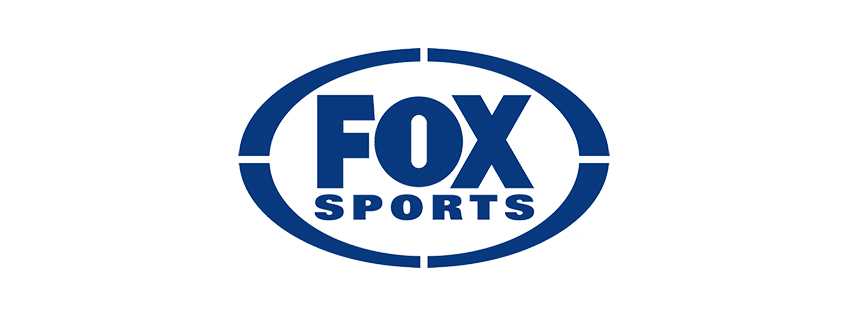The Litigation
Group e-news
The Litigation
Group e-news
For more than 20 years, The Litigation Group has provided trial lawyers with its expert insight into evaluating and creating effective jury communication strategies. This quarterly e–newsletter is designed to share some of our expertise concerning how to make the most compelling and effective arguments to a jury.
PAST ISSUES:
Different Jury Selection Methods
Case study: The Zimmerman Trial
Speaking Engagements Across the United States
Know Your Jury
How to Tailor Fit Your Case to the Jurors’ Mindset
Email Discovery: The Shock and Awe of the 21st Century Courtroom
Unleashing the Power of Video Depositions
Key Communication Issues in Winning
Ip Jury Trials
Winter 2015

Primacy and Recency Effects in a Trial
What do jurors remember most vividly?
By Mark T. Gerard, M.A.
President, The Litigation Group
![]() The concepts of primacy and recency have long affected jury decisions in a trial. While there are widely accepted benefits to primacy, recency presents numerous opportunities for leveraging opinions. In this article, I will discuss the origin of the primacy-recency debate and show multiple benefits and pitfalls to both primacy and recency tactics.
The concepts of primacy and recency have long affected jury decisions in a trial. While there are widely accepted benefits to primacy, recency presents numerous opportunities for leveraging opinions. In this article, I will discuss the origin of the primacy-recency debate and show multiple benefits and pitfalls to both primacy and recency tactics.
The law of primacy in persuasion is rooted in Lund’s 1925 theory, which suggests the side of an argument that is presented first is more effective than the arguments that follow. Although there was no statistical test correlated to Lund’s law of primacy, this belief was widely accepted for decades. In 1950, Cromwell argued directly against Lund’s law of primacy as he suggested that information presented more closely to the time of decision-making had a higher reliability—thus, the introduction of the primacy-recency debate.
An array of studies over the years have weighed in on primacy and recency, and it would appear there is no general rule favoring one over the other. The most important takeaways from the primacy-recency discourse suggest that aspects of primacy and recency can be capitalized on, particularly in a trial setting, in order to achieve the desired persuasive result. The key is to understand what is important to jurors.
For example, if the plaintiff in the primacy position does not cover a particular argument that is powerful to the defense side, it could seriously hinder the plaintiff’s ability to influence the jurors’ beliefs about the veracity of the plaintiff’s case. In my 35 years as a jury consultant, I have always found issues, arguments, and evidence that are problematic for the plaintiff’s case if they are not addressed in the plaintiff opening, potentially causing jurors to become skeptical about the plaintiff’s case. These issues, if amplified by the defense in its opening, can shatter the plaintiff’s case structure before the plaintiff begins to present evidence in their case-in-chief.
The Fallacy of “First Is Always Best”
The reality of a trial brings quite a bit of “gray” to the black and white of primacy’s “first is best” mentality. In a trial environment, information is added from each opposing viewpoint as the trial progresses with direct and cross-examinations. Instead of just hearing Side A and Side B and then making a judgment, trials create a unique back and forth environment of information sorting that ultimately allow jurors to put together the pieces of a puzzle over a period of time. That is why it is a highly risky strategy for the plaintiff to bring defense witnesses live in their case-in-chief. This strategy can backfire if the defense pours a great deal of its case in the plaintiff’s case-in-chief with that witness during the re-direct.
Once openings are completed, the primacy-recency effect is largely lost due to the back and forth nature of direct and cross-examinations. This leads to a benefit in the recency position. If the defense can effectively score points in the plaintiff’s case, then when the defense puts on its case it should be able to bring a dramatic shift in verdict sentiment to carry the day—that is until the closing arguments, where the process starts all over again for some jurors. In fact, actual jurors many times have said in post trial interviews that they were surprised how one side or the other had pieced the evidence in a persuasive manner, which brought a new appreciation for the evidence that was delivered at trial. This speaks volumes to the importance of the closing argument and the recency effect once all the evidence has been presented to a jury.
3 Tips for Leveraging Primacy and Recency
The following present some of the ways to structure primacy and recency into your trial:
- Information Recall: Take a minute to reflect on the things you did this morning. Now think back to this day last year, or even last month. Can you remember that morning as clearly as you can remember this one? Unless a ground-shaking event occurred on that day, you have probably forgotten the details of that morning. In a trial, this becomes extremely important when structuring your case through the order of witnesses, depositions, and information presented throughout your statements. More importantly, what the legal team might think are important, “ground-shaking” pieces of evidence, might or might not be viewed that way by the jurors. In order to understand what evidence are truly case-defining for jurors, it is important to engage in jury research with a sound and comprehensive issue analysis so to gain a vision of what is important from the jurors perspective.
- Closing Arguments: A strong closing argument is a powerful instrument in a trial. In fact, final impressions have been suggested to be even more important than first impressions – we all know the importance of leaving your jurors with a convincing last impression before they begin deliberations. It is crucial to thoroughly know your jurors and what arguments they want to hear that are highly persuasive. Understanding the issues your jurors value most in their decision-making and the ways to most effectively present that information to your jury can be obtained in a reliable and valid phase of jury research.
- Using Familiarity: Complex trials often have topics with low familiarity. If you are discussing more complex and unfamiliar issues like technology and copyrights, recency is more likely to work in your favor. The key to a complex case with unfamiliar topics is to drive the recency position with highly familiar analogies to persuade the jurors and capitalize on aspects of the trial that are familiar with the jurors (such as the focusing on features and experiences with smart phones in a case about technology of smart phones). On the other hand, if the case is dealing with easier to grasp and relatable topics, like an employment case, primacy will have a larger impact on the jurors and the defense must fight harder for the hearts and minds of the jurors.
Overall, research shows the “law of primacy” is no longer a general rule. While primacy will always play a role in the formation of first impressions in a trial, primacy is not the end of the story. Rather, there are situations and conditions, particularly in those trials with low familiarity, which favor recency. The key is to understand how to use primacy and recency to your benefit.
Mark T. Gerard
President
The Litigation Group
Contact us for information about collaborating with The Litigation Group

In May 2014, The Litigation Group partnered with the legal team at Anheuser-Busch to defend the company against a discrimination lawsuit filed by a former top-ranking female executive. The Litigation Group did extensive jury research in the case and worked with the trial team on jury communications and presentation strategies. A jury of seven women and five men deliberated for about 10 hours over two days before finding in favor of Anheuser-Busch.

A jury found in favor of Fox Sports in a case centering on patent infringement. An Austin, Texas, jury found in May 2014 that Fox Sports, a TLG client, did not infringe on four patents for online simulations of sporting events and also found that the patents were invalid. The Litigation Group worked with the Vinson & Elkins law firm to develop compelling arguments in this complex intellectual property case.

Apple was found not guilty in December 2014 after an almost ten-year-old antitrust case alleging the company harmed consumers and damaged the digital music industry companies when it barred competing music stores’ songs from playing on its IPod music player. The jury found that Apple had the right to make improvements to iTunes software and these updates did not constitute a monopoly on the digital music market. “We created iPod and iTunes to give our customers the world’s best way to listen to music. Every time we’ve updated those products — and every Apple product over the years — we’ve done it to make the user experience even better,” Apple said in a statement. The Litigation Group worked with the Apple trial team on a range of jury research and communications issues.


